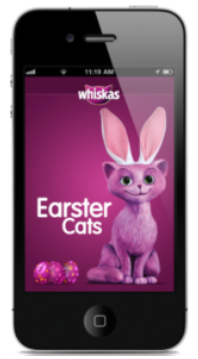Remember that viral story about the guy officiating his best friend’s wedding when he stopped the ceremony to propose to his girlfriend and then reveal that she was pregnant? And then when he stood up to make his toast, he gushed about his fiancee and their bright future instead of congratulating the newlyweds? If you do, then congratulations – you now understand the pop version of hijack marketing.
The key to hijack marketing is taking advantage of an already-existing event. Slipstream behind the “hype” to generate publicity for your own brand or cause. If you do it right, you could be top of mind before anyone can say, “I do.”
The first step in a hijack marketing campaign is to identify an existing event that has already captured the attention of the public – think major sporting events, national calendar days like Mother’s Day, or niche awareness days like World Chocolate Day (it’s July 7, you’re welcome).
Be warned: many others will be trying the same thing, so choose wisely, be authentic, and go in with your eyes open as to what the day means to people to avoid looking like a blundering, uninvited guest at the hype party.
Copyright is also important obviously, as Nike learned the hard way in 1996. Sprinter Michael Johnson won gold wearing a pair of $30,000 gold Nikes, then wore them on the front cover of Time Magazine. It was as if Nike won the gold medal in marketing – except they were not an official sponsor of the Olympic Games. Since then, the IOC and AOC have tightened their game, and now even tweeting “gold medal” can get you in trouble – so be careful which event you choose to hijack.
Global chocolate coma and gifting festival hype
Christmas and Easter are both respected religious holidays celebrated by literally billions of people worldwide, including retailers. Without fail, thousands of brands every year will be falling over themselves to take advantage of the collective obsession with chocolate, bunnies and gifting. Many have found ways to do it in tasteful ways, literally.
For instance, Cadbury capitalised on its own hype around the brand’s famous Creme Eggs in 2014 by releasing a limited edition Creme Egg-flavoured lip gloss just in time for Easter.
If you sell something completely unrelated – like cat food – you need a little more creativity to pull it off. But it’s definitely possible.
Case study: Whiskas
Just ask Whiskas, which took advantage of the Easter hype in 2011 with its “Earster Cats” digital campaign. The cat food company released an app allowing users to put giant bunny ears on their pets via augmented Smartphone cameras. Users could then edit the photos and share them with family and friends on social media, eliciting maximum engagement in the campaign.
It won ‘Best Use of Mobile Media in Advertising’ at the 2011 Mobile Awards and by the end of the Easter weekend, a new photo was created every ten seconds and almost 220,000 users had uploaded one or more branded Whiskas Earster Cat photos to Facebook.

Source: Campaign Brief
Creating ‘hype’ and ‘buzz’
For a good hijack marketing campaign, you need two things – “hype” and “buzz”. And you know, a good PR team, favourable market conditions, a healthy dose of luck and some other stuff – but let’s focus on hype and buzz.
“Hype” is the extravagant or intensive publicity surrounding a product or idea. It sounds straightforward, but actually creating hype requires a carefully curated media blitz involving smart plays and experience knowing how to find the sweet spots; but by using “hijack marketing” you’re saving a motzer by taking advantage of hype and SEO terms already generated (and paid for) by someone else.
Generating buzz is less expensive and time-consuming than generating hype – buzz is simply what people are saying to each other and sharing on social media. Consumers are becoming adept at filtering out hype because it feels too “slick” and pre-packaged, but they desire buzz because it connects people and makes consumers feel like they are a part of something larger than themselves. Whereas hype can lead to disappointment and disillusionment, buzz is most likely to lead to excitement and desire.
Once you have buzz, you have a successful campaign on your hands.
Case Study: Volkswagen
Volkswagen also pulled off a successful hijack marketing campaign on May 4 to celebrate Star Wars Day. Star Wars Day is an informal commemorative day observed annually on May 4 to celebrate the Star Wars media franchise. Many fans of the franchise worldwide come together to celebrate this day. Volkswagen has released a short video to celebrate the day with the caption “May 4 be with you”.
Spontaneous hijack marketing
It’s all well and good to be able to capitalise on a popular event that is planned in advance – especially one that was planned almost 2000 years in advance – but hijack marketing can also be implemented on the spur of the moment. Some of the most memorable moments are the unplanned ones (think about the Janet Jackson wardrobe malfunction), which puts extra pressure on the marketing team to generate ideas almost instantly. It’s a hit and miss situation, but hits have the potential to become wildly, ridiculously successful.
Case study: Oreo
A shining example of the effectiveness of real-time hijack marketing is the Oreo marketing team’s response to a half-hour blackout during the third quarter of the Super Bowl in 2013. While everybody else was probably frantically searching the Superdrome light switches, the marketing execs in the Oreo war room were hatching a million dollar idea.
Within minutes of the power outage, Oreo tweeted a picture of an Oreo cookie in low lighting with a caption that said simply, “Power out? No problem. You can still dunk in the dark.” Those ten words and one simple image linked the iconic brand into the conversation about the surprising blackout that was already trending on social media.
“Seven seconds is the perfect dunking time…Same as the amount of time it took to put this ad out after the blackout,” tweeted Monica Bickford. “PR win.” Thousands of similar congratulatory tweets followed.
Although the blackout was unplanned, Oreo’s response was anything but. A fifteen-strong social media team including copywriters, artists and strategists were on standby ready to respond to anything that happened during the Super Bowl in the shortest time possible. In fact, AdAge reported that the entire graphic was “designed, captioned and approved within minutes” and said, “For all the planning and millions of dollars that go into the creation of Super Bowl commercials, arguably the best ad of the game last night was [the Oreo] tweet.”
Speaking to Forbes at the time, VP of cookies at Oreo’s parent company Mondelez International Lisa Mann said, “Of course we couldn’t have anticipated the blackout, but in that command center we had brand people, agency people… Because everyone was together, they had everyone in place to jump on a real-time marketing opportunity, which was, how would Oreo see the blackout? And Oreo saw the blackout as an opportunity to dunk in the dark.”
The effectiveness of this campaign cannot be overstated. The post was retweeted 10,000 times in the first hour and another 5,000 times afterwards. Oreo’s Twitter following swelled by 8,000, Facebook likes shot up past 20,000 and their Instagram following leapt from 2,000 to a staggering 36,000. Not bad for a small cookie with big dreams.
Case study: Snickers
Similarly, Snickers pulled off a remarkably successful spontaneous hijack marketing campaign in the middle of the 2014 World Cup. The most-viewed televised event in the entire world was already surrounded by the kind of hype that only comes around once every four years, and Snickers was not about to let that opportunity go by. During a game between Uruguay and Italy, Luis Suarez was reprimanded for biting an Italian player – for the third time.
Snickers seized the moment with the campaign “Snickers: more satisfying than Italian” – the tagline being both aligned with the brand and tapping into a conversation that had already taken off.
So whether this article inspired you to hastily change your plan to propose at someone else’s wedding or just made you hungry for chocolate, don’t forget the huge advantage of hijack marketing is that the hype has already been created for you – all you need to do is kickstart the buzz.

Source: ABC News
But be warned – getting it right isn’t easy. If a brand fails to create an authentic connection with its customer base, or disrespects the essence of the event or day, their relationship with consumers can sour almost instantly. For example, the well intentioned Woolworths ANZAC Day social media campaign is a cautionary tale for aspiring hijack marketers. With the slogan “fresh in our memories”, the retail giant and its social media agency came across as out-of-touch and inauthentic, rather than patriotic and supportive.
“The problem with the Woolworths campaign was that the brand was too visible, too overt. ‘Fresh in our memories’ was an incredibly crass way to link the memory of soldiers to ‘Fresh Food People’,” Mumbrella’s chief reporter Steve Jones said at the time.
Keep an eye out for events you could use to your advantage and don’t forget to be topical, but pick your moment wisely since the secret of hijack marketing is well and truly out. And don’t forget – proposing on someone else’s special day could see you landed with a hefty bill for half the wedding.
For more information visit: Brand Storytelling, Communications & Marketing
